- Home
- John Updike
Seek My Face
Seek My Face Read online
“PROVOCATIVE … ELOQUENT.”
—Vogue
“Rich and engaging … Vividly rendered … A subtle work that’s beautiful and profound, witty and trenchant. It’s what we’ve come to expect from this prestigious figure of American letters—effortless, fully human fiction whose ambitiousness is all the more impressive in that its tone is often conversational, off-handedly Olympian.… With Seek My Face, Updike has given us not only the record of the rise and fall of American art, from poetry to product, he’s also rendered, carefully and lovingly, the dynamics of an essential conversation/struggle—that between battered, knowing experience and crass innocence. All great fiction aims at this sort of instruction, a kind of conversation between a single, fallible, representative human being and the voice of history. With Hope’s story, Updike is doing in miniature what he did with his trademark Harry ’Rabbit’ Angstrom tetralogy—telling the tale of America’s maturation, from exuberance to exhaustion, in the story of a very real character.… His critique of the human condition is as sharp as ever, never lacking acuity or panache.… Like his protagonist, he’s a winning militant—generous, convincing, celebratory, and unbowed.”
—Book magazine
“Appreciative, wry and, well, full of hope … [Updike] brings his microscopic eye for emotional and physical detail to bear on the life of Hope.… Updike has written extensively about art and artists. On page after page in Seek My Face, he demonstrates his understanding of that world and its techniques.”
—Chicago Tribune
“The outlines of Hope’s life are gradually filled in with rich, meaningful detail around the framework of her own artistic experiences, her three marriages, and the raising of her three children.… Despite its uncomplicated premise, the novel achieves a remarkable depth of characterization and a glowing beauty in its articulation of the artistic sensibility.”
—Booklist (starred and boxed review)
“SEE MY FACE PROVES THE LITERARY ICON IS STILL
READY TO TAKE CHANCES.”
—Boston Herald
“Powerful … We get Hope whole, an appealing and convincing creation.… Swirled over [his] simple, elegant premise is John Updike’s superabundant prose, dazzling strings of looping sentences that wrap the two women in glittering constellations of words, glorious spurts.… Perhaps the most remarkable aspect of this novel is the fact that Mr. Updike has managed to make Hope’s emotional life—her estrangement from her only daughter, her memories of her grandfather—just as compelling as her public, her historic, entanglement with various icons of the art world.… Hope is hardly a saint, but she’s led a good life.… It’s the unpacking of this plain truth, and the wonder of it, that is the essence and beauty of Seek My Face.”
—The New York Observer
“[Updike] writes with such grace, rhythm and sureness that there is an easy temptation simply to swim across page after page, yet there is much of challenging substance for the attentive reader.… Updike’s prose is marked by a quality of infinite attentiveness, using all of the human senses to replicate for the reader what his characters experience.… This new novel is a fugue, a sustained counterpoint between powerfully excited love of life and the profound sadness of mortality.… Updike movingly grasps greatness and its drive, as manifest in Pollock, Warhol and other painters, but in his own accomplishments as well.”
—The Baltimore Sun
“Stunningly revealing … The richness of detail has its way with us.… Another new fictional world entered, as Updike himself enters old age, with skills and ambitions very much intact.… Yet another illustration of this adventurous writer’s enduring curiosity, versatility, and stylistic energy.”
—Kirkus Reviews (starred review)
“Especially thoughtful … It’s an imaginative way to relate this history, and Updike asks probing aesthetic questions that range beyond his story.”
—Library Journal
“[AN] ELEGANT NOVEL [THAT] PROBES
DEFTLY AND DEEPLY THE ENDURING MYSTERIES
OF ART AND LIFE…
Updike is able to not only engage our attention but to compel it, to not only make the women, their conversation and his heroine’s memories vivid and believable but also provocative, comical, touching and ultimately important.… Because of his verbal dexterity, as well as his extraordinary empathy and intelligence, he achieves a poetic subtlety and depth that no biography of the artist, nor the recent, mostly admirable film Pollock, ever approaches.”
—The Philadelphia Inquirer
“[A] rewarding new novel from our reigning master of surprise, the last sequence of which is surpassing in its beauty … Updike pushes far beyond his research, transforming his sources into the full life of an extraordinary woman.… The prose sometimes rises to the beautiful, the elegiac, as Hope, under the scrutiny of the young interviewer, looks to her life for meaning.”
—San Francisco Chronicle
“Solid and significant … Seek My Face shows the emotional intensity beneath the creative process.… Updike’s craft is everywhere, pulling images from the painter’s world, noting form and, especially, color on Hope’s behalf.… The novel succeeds as a study on the artist’s psyche—and of a perceptive, vital woman whose visions swirl through the pages as they might across a huge canvas.”
—The Plain Dealer (Cleveland)
“Wonderfully vivid … [Updike] comments knowingly on art movements, the changing role of beauty, the relationship between creators and critics. More poignant are his takes on the fragility and toughness of the elderly, the pain and joy of parenthood and the resilient generation that came of age in the ’40s.… This heroine is wonderfully complex, even while making a potent case against art-world sexism.… Every page glistens with bright description.”
—Newsday
A Ballantine Book
Published by The Random House Publishing Group
Copyright © 2002 by John Updike
All rights reserved.
Published in the United States by Ballantine Books, an imprint
of The Random House Publishing Group, a division of Random
House, Inc., New York, and simultaneously in Canada by Random
House of Canada Limited, Toronto.
Ballantine and colophon are registered trademarks
of Random House, Inc.
Seek My Face is a work of fiction. Names, places,
and incidents either are products of the author’s imagination
or are used fictitiously.
www.ballantinebooks.com
Library of Congress Control Number: 2003096515
eISBN: 978-0-307-41659-9
This book published by arrangement with Alfred A. Knopf,
a division of Random House, Inc.
v3.1_r1
You speak in my heart and say, “Seek my face.”
Your face, Lord, will I seek.
—Psalm 27
Books were still governed by the old rule,
Born of a belief that visible beauty
Is a little mirror for the beauty of being.
—CZESLAW MILOSZ, A Treatise on Poetry
What will our children’s children say
About our art-monsters in future years
When Christian quiet relaxes the nations
And, as in the sunburst of the Renaissance,
Paint shall be gorgeous and, I hope, holy?
—KARL SHAPIRO, Trial of a Poet
This is a work of fiction. Nothing in it is necessarily true. Yet it would be vain to deny that a large number of details come from the admirable, exhaustive Jackson Pollock: An American Saga, by Steven Naifeh and Gregory White Smith (Clarkson N. Potter, 1989), or that some of my fictional artists’ statements are closely derived from those collected in Abs
tract Expressionism: Creators and Critics, an illuminating anthology edited and introduced by Clifford Ross (Harry N. Abrams, 1990).
J.U.
Contents
Cover
Title Page
Copyright
Epigraph
First Page
Other Books by This Author
About the Author
“LET ME BEGIN by reading to you,” says the young woman, her slender, black-clad figure tensely jackknifed on the edge of the easy chair, with its faded coarse plaid and broad arms of orangish varnished oak, which Hope first knew in the Germantown sunroom, her grandfather posed in it reading the newspaper, his head tilted back to gain the benefit of his thick bifocals, more than, yes, seventy years ago, “a statement of yours from the catalogue of your last show, back in 1996.”
As a child Hope would sit in the chair trying to feel what it was like to be an adult, resting her little round elbows on the broad arms, spreading her fingers, a ring of fat between each joint, on the dowel end, which was set in the softly curved arm, a kind of wooden coin with a pale stripe in it, the butt end of the wedge that tightened the dowel. The chair’s arms had been too far apart for her to rest more than one elbow and hand at a time. She must have been—what?—five, six. Even when new, in the ’twenties or ’teens, the chair would have been a homely unfashionable thing, a summer kind of furniture, baking in the many-windowed sunroom with the potted philodendron and the lopsided hassock, the hassock’s top divided like a pie in long triangular slices of different colors of leather. When her grandmother’s death in the ’fifties had at last broken up the Germantown house, Hope coveted the old chair and, her amused surviving brother making no objection, brought it to Long Island, where it sat upstairs in her so-called studio, where she would sometimes try to read by the north window, the sash leaking wind howling in off Block Island Sound while Zack played jazz records—Armstrong, Benny Goodman, a scratchy Beiderbecke—too loud downstairs; and then to the apartment with Guy and the children on East Seventy-ninth, in the dun-walled back spare room by the radiator that clanked like a demented prisoner while she tried to set her own rhythm with the loaded brush; and then to Vermont, where she and Jerry had bought and renovated and dug in for their last stand in life, a chair transported from muggy Pennsylvania to a colder, higher climate yet hardly incongruous in this plain, prim, low-ceilinged front parlor, the chair’s round front feet resting on the oval rug of braided rags in a spiral, its square back feet on the floorboards painted the shiny black-red of Bing cherries, the browns and greens and thin crimsons of its plaid further fading into one pale tan, here in the sparse blue mountain light of early April. Strange, Hope thought, how things trail us place to place, more loyal than organic friends, who desert us by dying. The Germantown house became overgrown in Grandmother’s lonely last years, its thick sandstone walls eaten to the second-story windowsills by gloomy flourishing shrubbery, hydrangea and holly and a smoke tree whose branches broke in every ice storm or wet snow, the whitewash flaking and the pointing falling out in brittle long crumbs lost down among the stems of the peonies, the roots of the holly. She had loved living there when so small, but after her parents moved to Ardmore visits back felt strange, the huge droopy-limbed hemlock having grown sinister, the yard with its soft grass smelling heated and still like the air of a greenhouse, the swing that her spry little grandfather, the first person Hope knew ever to die, had hung from the limb of the walnut tree rotting, ropes and board, in an eternally neglected way that frightened her.
The young woman, a narrow new knife in the chair’s fat old sheath, reads in her edgy New York voice, a voice that leans toward Hope with a pressure of anxiousness but also with what seems, in this shaky light of late life, a kind of daughterly affection, “For a long time I have lived as a recluse, fearing the many evidences of God’s non-existence with which the world abounds. The world, it has come to me slowly, is the Devil’s motley, colorful instead of pure. I restrict my present canvases to shades of gray ever closer together, as if in the predawn, before light begins to lift edges into being. I am trying, it may be, to paint holiness. I suppose I should be flattered when some critics call this phase my best—they write that at last I am out from the shadow of my first husband. But I have, miraculously it might be said, ceased to care what they think, or what figure I cut in the eyes of strangers. End quote. This was five years ago. Would you say it is still true?”
Hope tries to slow the young woman down, dragging her own voice as if in thought. “True enough, I would say, though it does sound a shade self-dramatizing. Perhaps ‘fearing’ is strong. ‘Feeling dread and distaste in regard to’ might have been more accurate and—and seemly.”
It makes a lump in Hope’s throat to have this nervously aggressive intruder here, with her city-white face and her dark-nailed long hands and her doctrinairely black outfit—black turtleneck, black imitation-leather jacket with a big center zipper, black hair held off her ears by a pair of curved silver combs and falling in a loose and silky fan-shape down her back—finished off so ominously with heavy squaretoed footgear, combat boots of a sort, laced up through a dozen or more eyelets like two little black ladders ascending into the flared bottoms of her slacks, the slacks made of a finely ribbed, faintly reflective fabric Hope has never seen before, a fabric without a name. The boots, with that new kind of high heel, wide sideways but narrow the other way, front to back, couldn’t be very comfortable, unless mannishness was always comfortable now. It is a new century—more appallingly yet, a new millennium. This millennial fact for Hope is a large blank door that has slammed, holding her life behind it like a child smothering in an abandoned refrigerator.
The visitor’s voice, insistent with a certain anger yet femalely flexible, insinuating itself into her prey’s ear, asserts, “You were raised as a Quaker.”
“Well, ‘raised’ is a kind term for it. My grandfather was an elder, true, but my father, especially after we moved to Ardmore, attended meeting only once or twice a year. The Ouderkirks had been Dutch Quakers; Dutch Quakers settled Germantown, a misnomer really, it should have been called Dutchtown, just as the Pennsylvania Dutch should be properly Pennsylvania Germans. Pockets of these Dutch Quakers had been living in the Rhine Valley; the Ouderkirks came from Krefeld; Penn himself had visited them in the sixteen seventies, telling them of his lovely colony, his ‘holy experiment’ across the sea. When they first came over, in the sixteen eighties, some lived in caves until they could build their houses. My mother, though, was quite Episcopalian, typically lukewarm, but she would never have called herself irreligious. We all went to meeting together a few times, it seems like quite a few but in a child’s mind a little does for a lot. I remember mostly the light, and the silence, all these grown-ups waiting for God to speak through one of them—suppressed coughs, shuffling feet, the creak of a bench. It upset me at first, you know how children are always getting embarrassed on behalf of adults. Then the quality of the silence changed, it turned a corner, like an angel passing, and I realized it was a benign sort of game. The Friends speak of ‘living silence.’ Actually, someone did eventually speak. It had been arranged. The Quakers did make arrangements, but left space for God, so to speak, to upset the arrangements. There was a kind of elaborate courtesy to it all. Once there had been a bench up front for the elders and recorded ministers, but by the time I remember, the late ’twenties it must be, the very early ’thirties, I would have been ten in 1932, the benches were arranged in a square, so no one had any priority in the seating. Though my grandfather never led us to a back bench.”
Be quiet, Hope tells herself. This has ever been her fault, talking, giving, flirting, trying too hard to please, endeavoring to seduce. Her grandfather would use a Quaker phrase, “of the creature,” for anything that was too much, too human, too worldly, too selfish and cruel. War was of the creature. Lust and intemperance of course, yet reason and excessive learning and disputation, too. The arts—save for the domestic, Edenic art of garde
ning, and the hidden art of making money—were of the creature, howls for recognition and singularity. Things of the creature were weak and dirty and unworthy; they were a form of noise. As a child Hope had chattered too much, feeling her round freckled face redden with excitement, her heart nearly bursting with its own beating, wanting within her ribs all of her, head to toes, scalp to footsoles, to be loved, to be held, to be desired. Even now, on the grave’s edge, seventy-nine last month, the unmerry month of March, she is trying to charm the lithe black-clad stranger, charmless though she herself has become, in her baggy brown corduroys and slack-necked yellow cotton turtleneck and thick wool lumberjack shirt left untucked as if to hide her belly but in truth calling attention to it; her belly bulges but her breasts and buttocks are sunken, she has become beneath her clothes a naked witch by Schongauer, with imps of arthritic pain her familiars, or Rembrandt’s dreamy Saskia several decades further lost in sags and wrinkles. Her shiny auburn bangs, her signature when a young woman, are not even gray now but white, so thinned and dry and lacking in body, each filament sticking out with a mind of its own, as to be a mere souvenir of what once covered her forehead with the smooth bulge of a coppery cuirass. Her hair was cut short then, two points curving in to touch the angles of her jaw, the wide jaw defining the pale pentagon that looked back at her from a mirror with a deceptive calm, firm in its freckled hazel gaze, the nose small and straight, the lips not quite full but tidy and quick to express receptivity, to laugh, to smile, even at herself so earnestly appraising her face in the mirror, a dimple leaping up low in the left cheek. As a child she wondered where the reflection went when she walked away; mirrors hung on the Germantown walls like paintings that kept changing subject. The ’sixties liberated her from lipstick and those frizzing ’forties and ’fifties perms as well as from girdles and garters; she let her hair grow long and flat down her back, bundling it into a quick ponytail to paint or do housework, she had all sorts of artful clips and hinged round combs, tortoiseshell, and ivory before endangered elephants became an issue. The gray ghost of this ponytail now is gathered at the back of her skull in one of those candy-colored elastic circlets they sell at the Montpelier five-and-ten (one of the few five-and-tens left anywhere, they don’t call it that, just the phrase dates her, a dime gets you nothing now), and on her feet she has thick socks the color of lint and cradling soft Birkenstocks, which date her also. The ’sixties had been for her a grateful release, a joy, though she was in her forties for most of them. Money worries, mating worries were behind her, she was a Manhattanite with a horse farm in Connecticut, married to Guy Holloway, Pop Art’s super-successful boy wonder, and, more amusingly still, a mother of three young children, pushing in her denim miniskirt and auburn bangs a wire cart with little Dot in the infant seat in corduroy overalls (the pocket a staring teddy bear or a round-eyed canary) and the two boys trailing behind whining for this and that through the aisles of the Lexington Avenue Gristede’s, all those clustered consumeristic colors under the blazing cool ceiling, such uninhibited colors, Day-Glo oranges and phosphorescent greens and acid persimmons, a decade of brazen rainbows, of gold leaf and silvering returning to canvases, of shimmering psychedelic trips. Yet these interviewers always asked her about the dreary, fearful ’forties and ’fifties, the first decade a gunmetal gray and the second that sickly powder blue you can see in the washed-out ’fifties movies on television.

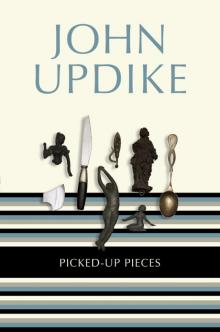 Picked-Up Pieces: Essays
Picked-Up Pieces: Essays Bech: A Book
Bech: A Book Roger's Version: A Novel
Roger's Version: A Novel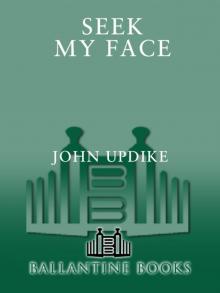 Seek My Face
Seek My Face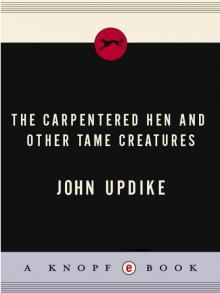 The Carpentered Hen
The Carpentered Hen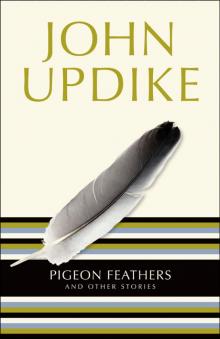 Pigeon Feathers: And Other Stories
Pigeon Feathers: And Other Stories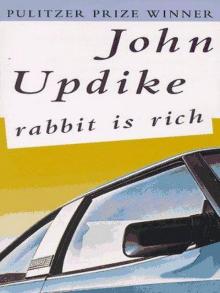 Rabbit Is Rich
Rabbit Is Rich The Afterlife: And Other Stories
The Afterlife: And Other Stories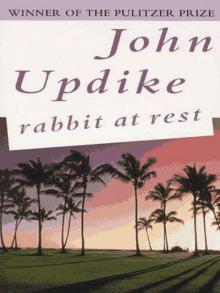 Rabbit at Rest
Rabbit at Rest The Witches of Eastwick
The Witches of Eastwick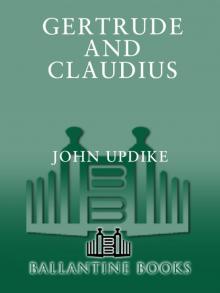 Gertrude and Claudius
Gertrude and Claudius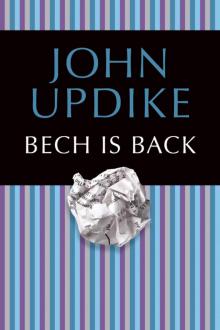 Bech Is Back
Bech Is Back Hub Fans Bid Kid Adieu: John Updike on Ted Williams
Hub Fans Bid Kid Adieu: John Updike on Ted Williams Marry Me: A Romance
Marry Me: A Romance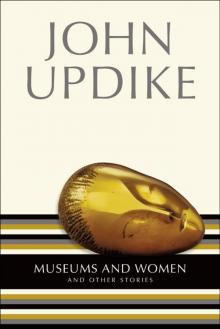 Museums and Women: And Other Stories
Museums and Women: And Other Stories My Father's Tears and Other Stories
My Father's Tears and Other Stories Collected Poems, 1953-1993
Collected Poems, 1953-1993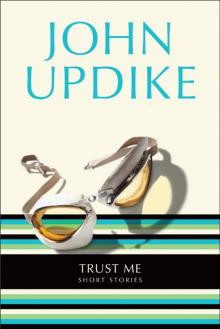 Trust Me: Short Stories
Trust Me: Short Stories Odd Jobs: Essays and Criticism
Odd Jobs: Essays and Criticism Rich in Russia
Rich in Russia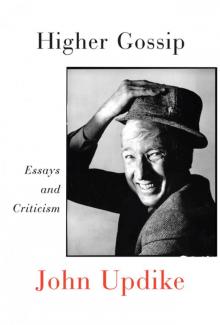 Higher Gossip: Essays and Criticism
Higher Gossip: Essays and Criticism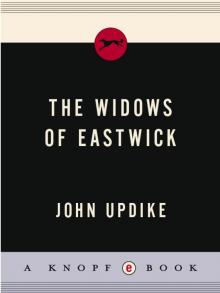 The Widows of Eastwick
The Widows of Eastwick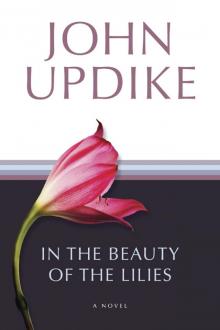 In the Beauty of the Lilies
In the Beauty of the Lilies Rabbit, Run
Rabbit, Run The Early Stories: 1953-1975
The Early Stories: 1953-1975 Rabbit Redux
Rabbit Redux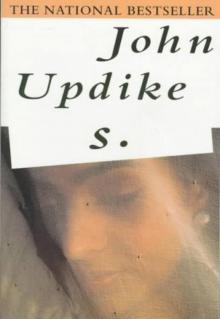 S.
S. Brazil
Brazil Toward the End of Time
Toward the End of Time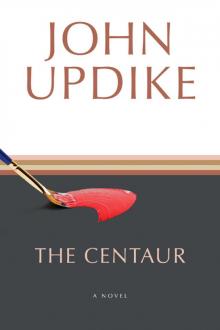 The Centaur: A Novel
The Centaur: A Novel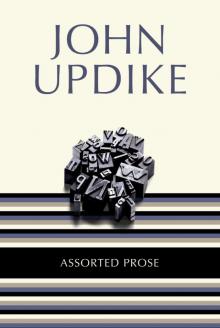 Assorted Prose
Assorted Prose Memories of the Ford Administration
Memories of the Ford Administration Terrorist
Terrorist Couples: A Novel
Couples: A Novel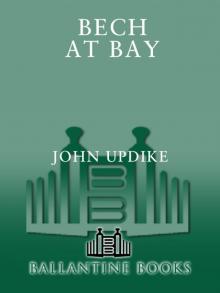 Bech at Bay
Bech at Bay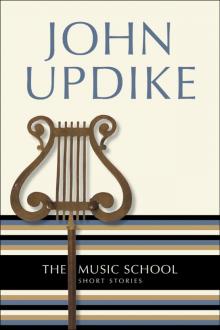 The Music School: Short Stories
The Music School: Short Stories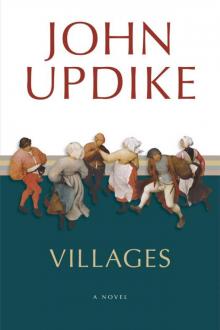 Villages
Villages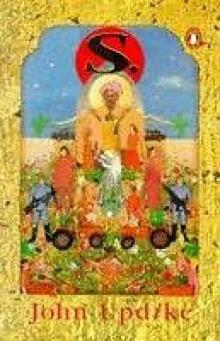 S
S Roger's Version
Roger's Version Pigeon Feathers
Pigeon Feathers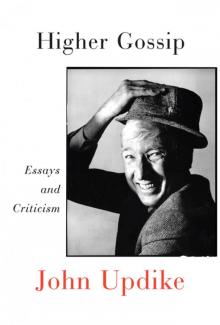 Higher Gossip
Higher Gossip Rabbit Redux r-2
Rabbit Redux r-2 Memories of the Ford Administration: A Novel
Memories of the Ford Administration: A Novel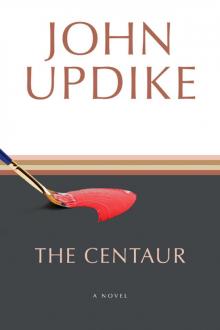 The Centaur
The Centaur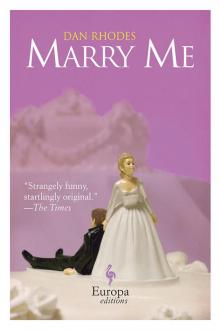 Marry Me
Marry Me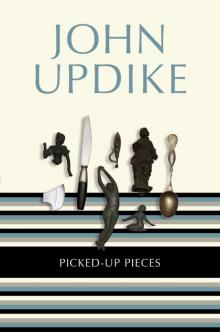 Picked-Up Pieces
Picked-Up Pieces Bech
Bech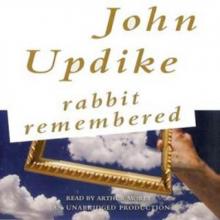 Rabbit Remembered
Rabbit Remembered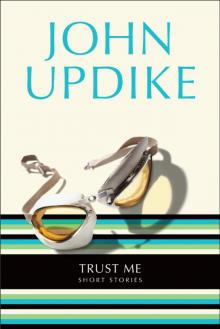 Trust Me
Trust Me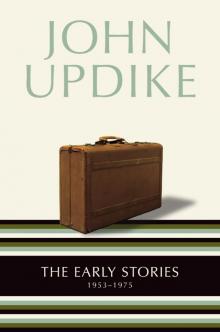 The Early Stories
The Early Stories Odd Jobs
Odd Jobs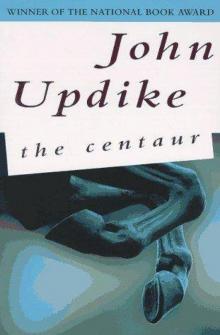 The Centaurus
The Centaurus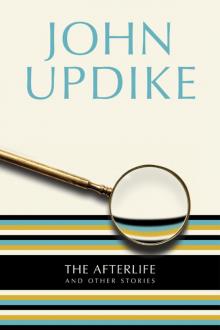 The Afterlife
The Afterlife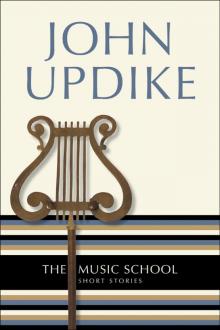 The Music School
The Music School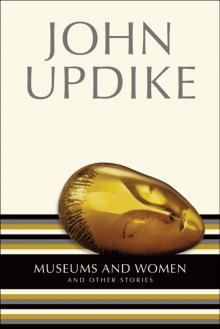 Museums and Women
Museums and Women Couples
Couples